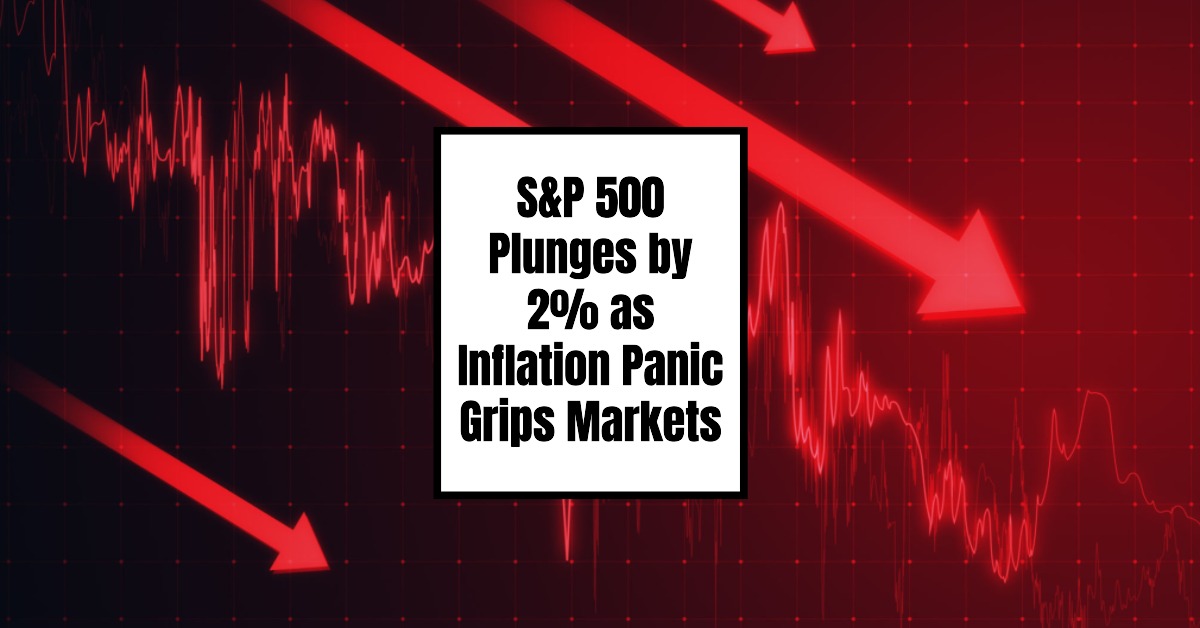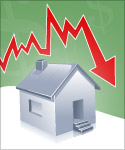You know, when I saw the headlines on March 28th, 2025, my gut reaction was a familiar unease. Wall Street Plunges as Inflation Panic Grips Markets – it’s a phrase that sends a shiver down the spine of anyone paying attention to their investments or the broader economy. And that’s precisely what happened.
The release of February 2025 economic data, specifically the Personal Consumption Expenditures (PCE) price index and figures on how much we're all spending, painted a picture that investors didn't like. The definitive answer is this: concerns about ongoing inflation, coupled with signs that the economy might be slowing down, triggered a significant sell-off in the stock market.
Let's dig a little deeper into what exactly caused this ripple of fear and what it might mean for us.
S&P 500 Plunges by 2% as Inflation Panic Grips Markets
Decoding the Economic Tea Leaves: PCE and Spending
The PCE price index is like the Federal Reserve's favorite thermometer for checking the temperature of inflation. It looks at the prices of all the stuff we buy – from groceries to haircuts – and tracks how those prices are changing. What the February 2025 data showed was that this thermometer wasn't showing a fever breaking just yet.
Specifically, the report indicated that the overall PCE price index rose by 0.3% in February, putting the year-over-year increase at a concerning 2.5%. But the real worry came from the core PCE price index, which strips out the often-volatile prices of food and energy to give a clearer picture of underlying inflation. This core measure jumped by 0.4% in February, resulting in a year-over-year rate of 2.8%. To put it plainly, these numbers suggest that the underlying price pressures in the economy aren't easing as much as we'd hoped, and they're still sitting above the Federal Reserve's comfortable 2% target.
Now, let's talk about our wallets – or rather, how much we're opening them. Consumer spending is the engine that drives a big chunk of our economy. If we're not buying things, businesses suffer, and the economy can slow down. The February data revealed that consumer spending grew by 0.4%, which might sound okay on the surface, but it actually fell short of the expected 0.5% increase.
Here's where the knot in my stomach tightens. We've got prices that are still rising too quickly, and people seem to be a bit more hesitant to spend. This combination brings up the dreaded specter of stagflation – a nasty scenario where the economy isn't growing much, but prices keep going up. It's like being stuck in slow motion while everything around you gets more expensive.
Why This Data Sends Chills Down Wall Street's Spine
The market's reaction on March 28th was pretty dramatic. The S&P 500 plunged by 2%, the NASDAQ, heavily weighted with tech companies, took an even bigger hit of 2.7%, and the more traditional Dow Jones Industrial Average dropped by 1.7%. These aren't small dips; they represent a significant amount of investor concern hitting the market all at once.
Think of it like this: if inflation stays high, the Federal Reserve might feel pressured to keep interest rates higher for longer to try and cool things down. Higher interest rates can make it more expensive for businesses to borrow money for expansion, and it can also make investors less willing to put their money into stocks when safer, higher-yielding options like bonds become more attractive.
Furthermore, if consumer spending is starting to slow, that could mean companies will have a harder time selling their goods and services, which could ultimately hurt their profits. And if profits take a hit, stock prices tend to follow suit. It's a connected web, and this recent data has highlighted some potential weak points.
The Tariff Wildcard: Throwing Fuel on the Inflation Fire?
Just when you thought there was enough to worry about, another factor has entered the equation: tariffs. There's growing chatter and, frankly, concern that potential tariff hikes, like those previously implemented and possibly expanded by the Trump administration, could further exacerbate inflation.
Think about it. Tariffs are essentially taxes on imported goods. If the cost of bringing in things like cars and auto parts goes up, those costs are likely to be passed on to consumers in the form of higher prices. This could create another layer of upward pressure on inflation, making the Fed's job even harder and potentially leading to even more economic uncertainty.
For me, this is a particularly worrying aspect because tariffs don't just affect prices; they can also disrupt supply chains and lead to retaliatory tariffs from other countries, which can harm American businesses that rely on exports. It's a complex issue with potentially far-reaching consequences.
Navigating the Uncertainty: What Investors Should Consider
In times like these, it's easy to feel a bit lost in the market turbulence. But from my perspective, a level-headed approach is always the best strategy. Here are a few thoughts on what investors might want to keep in mind:
- Don't Panic: It's natural to feel a bit anxious when the market takes a dive, but selling off your investments in a knee-jerk reaction can often do more harm than good. Remember that market fluctuations are a normal part of investing.
- Review Your Portfolio: Take a look at your current investments and consider if your portfolio is still aligned with your long-term goals and risk tolerance. This might be a good time to rebalance if needed.
- Focus on the Long Term: Investing is often a marathon, not a sprint. Try to keep your focus on your long-term objectives and avoid getting too caught up in short-term market noise.
- Consider Diversification: A well-diversified portfolio across different asset classes and sectors can help to cushion the impact of market downturns in specific areas.
- Stay Informed: Keep an eye on economic data and Federal Reserve announcements, but be wary of getting your information solely from sources that might sensationalize market movements.
I personally find it helpful to step back and remember why I'm investing in the first place – whether it's for retirement, a down payment on a home, or another long-term goal. This helps to put short-term volatility into perspective.
Looking Ahead: What's Next on the Economic Calendar
Investors will likely be glued to upcoming economic reports and statements from the Federal Reserve. Key things to watch out for include:
- The March Consumer Price Index (CPI): This report, which measures inflation from a different angle than the PCE, will give us another important data point on price pressures.
- Federal Reserve Meetings and Communications: Any hints from the Fed about their future plans for interest rates will be closely scrutinized by the market.
- Further Data on Consumer Spending and Economic Growth: Reports on retail sales, manufacturing activity, and overall GDP growth will provide more clues about the health of the economy.
The market's current sensitivity highlights just how crucial these upcoming data releases will be in shaping investor sentiment and the overall economic outlook.
My Takeaway: Staying Vigilant in Uncertain Times
For me, the recent market tumble serves as a reminder that the economic recovery is still facing headwinds, and inflation remains a significant concern. The interplay between persistent price pressures, potentially slowing consumer spending, and the uncertainty surrounding trade policies creates a complex and somewhat unsettling picture.
While it's impossible to predict the future with certainty, I believe that maintaining a cautious and well-informed approach to investing is more important than ever. This means staying abreast of economic developments, understanding the potential risks and opportunities, and being prepared to adapt your strategy as the situation evolves.
Ultimately, the economy and the stock market are dynamic entities, constantly responding to new information and evolving conditions. As individual investors, our best bet is to remain informed, stay disciplined, and focus on our long-term financial goals amidst the inevitable ups and downs.
Read More:
- Stock Market Predictions 2025: Will the Bull Run Continue?
- Stock Market Crash: Nasdaq 100 Tanks 3.5% Amid AI Concerns
- Stock Market Crash Prediction With Huge Discounts on Bitcoin, Gold, Houses
- S&P 500 Forecast for the Next Year: What to Expect in 2025?
- Stock Market Predictions for the Next 5 Years
- Billionaire Warns of Stock Market Crash If Harris Wins Elections
- Stock Market is Predicted to Surge Regardless of the Election Outcome
- Echoes of 1987: Is Today’s Stock Market Crash Leading to a Recession?
- Is the Bull Market Over? What History Says About the Stock Market Crash
- Wall Street Bear Predicts a Historic Stock Market Crash Like 1929
- Economist Predicts Stock Market Crash Worse Than 2008 Crisis
- Stock Market Forecast Next 6 Months
- Next Stock Market Crash Prediction: Is a Crash Coming Soon?
- Stock Market Crash: 30% Correction Predicted by Top Forecaster




